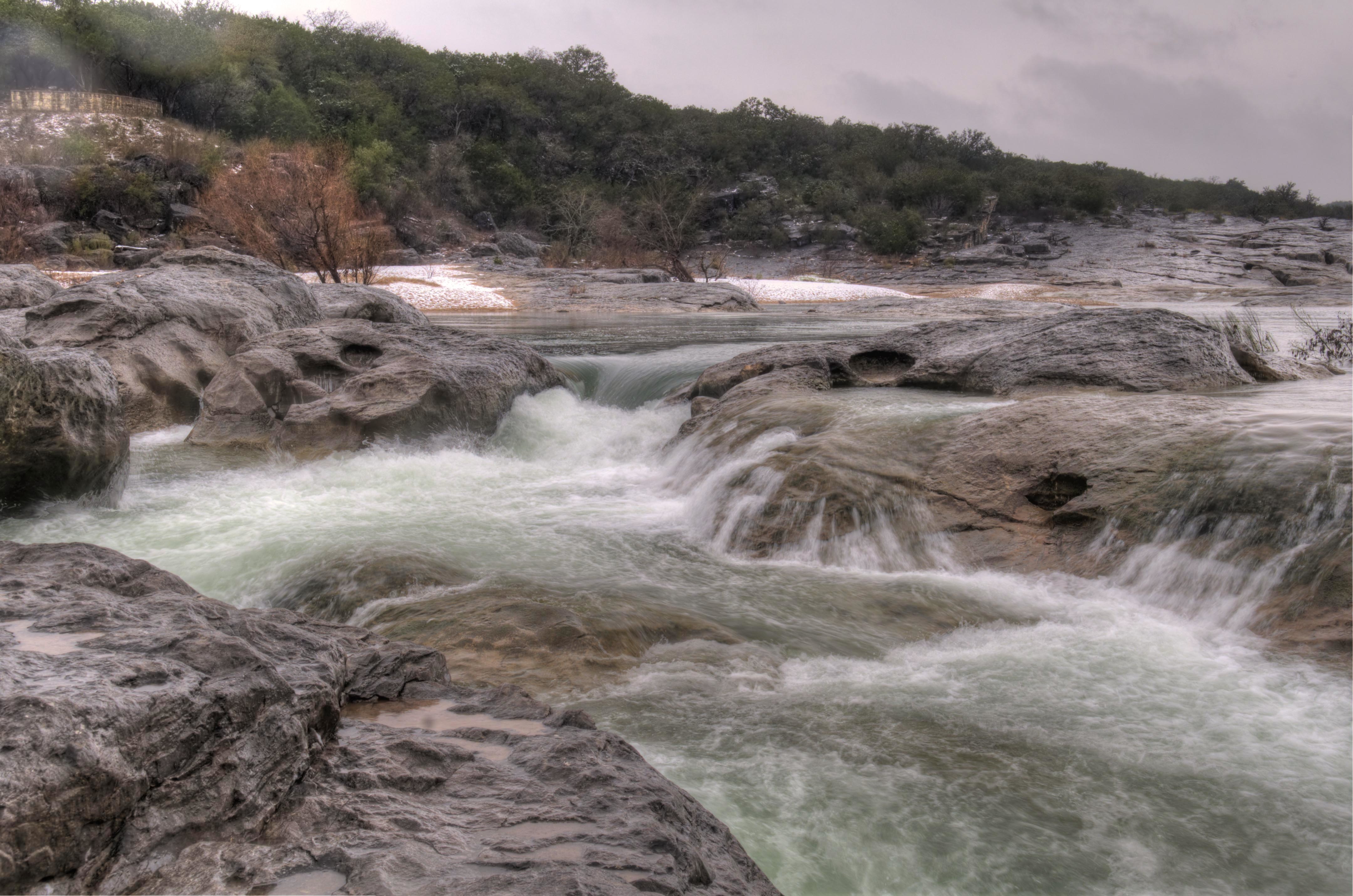- Texas EFIT Hydrology Dashboard
- The Great Plains (GP) EFIT Hydrology Dashboard
- The GP EFIT Hydrology Dashboard User Guide
- Protecting and Restoring Environmental Flows and Water Levels in Prairie Rivers and Streams in the Great Plains Final Report (Download)
- The GP EFIT Flow Ecology Dashboard
- The GP EFIT Water Planning Dashboard
The Environmental Flow Information Toolkit
A Decision Support Tool That Identifies Areas to Align with Voluntary Management Strategies for The Restoration and Protection of Environmental Flows
Restoration and protection of environmental flows in rivers, streams and other aquatic systems is a growing concern as the demand for water increases throughout Texas. Alteration of the natural flow regime has contributed to declines in aquatic communities, and the productivity of riparian habitats.
 The Environmental Flow Information Toolkit (EFIT) is a decision support tool built by The Texas Parks and Wildlife Department to aid in developing strategies for the protection and restoration of natural flow regimes and water levels in Texas aquatic systems. Driven by end-user recommendations and feedback, the toolkit is comprised of interactive dashboards, analytical tools, data and publications designed to identify opportunity areas for environmental flow mitigation efforts. The interactive geospatial platform of dashboards incorporates multiple data sources and integrated statistical models to serve critical information on water use, hydrologic alteration, and environmental flow targets to meet conservation objectives. It is our hope that the EFIT will enable environmental flow practitioners and stakeholders to communicate and collaborate more effectively to achieve voluntary environmental flow protection and restoration strategies.
The Environmental Flow Information Toolkit (EFIT) is a decision support tool built by The Texas Parks and Wildlife Department to aid in developing strategies for the protection and restoration of natural flow regimes and water levels in Texas aquatic systems. Driven by end-user recommendations and feedback, the toolkit is comprised of interactive dashboards, analytical tools, data and publications designed to identify opportunity areas for environmental flow mitigation efforts. The interactive geospatial platform of dashboards incorporates multiple data sources and integrated statistical models to serve critical information on water use, hydrologic alteration, and environmental flow targets to meet conservation objectives. It is our hope that the EFIT will enable environmental flow practitioners and stakeholders to communicate and collaborate more effectively to achieve voluntary environmental flow protection and restoration strategies.
The EFIT is currently available for the Great Plains region of Texas based on initial funding from the Great Plains Landscape Conservation Cooperative (GPLCC). The GPLCC participated in watershed-based conservation planning efforts that identified flow protection and restoration strategies as priority conservation actions to conserve native fishes in the Great Plains (GP). Ultimately, the GP EFIT will be composed of three web-based dashboards, each representing the functional and informational needs defined by three scenarios (hydrology, flow-ecology, and water planning), and a set of supporting data layers. At present, the GP EFIT has an active Hydrology Dashboard that serves data and information based on streamflow and water use data, hydrologic modeling, and other relevant information. Development of Flow-Ecology and Water Planning dashboards continues with a goal to incorporate them into the GP EFIT by the end of the year.
Expanding the EFIT Statewide
Building upon the work of developing the GP EFIT, TPWD secured funding to expand the EFIT to the rest of Texas. Initially, the statewide EFIT will focus on hydrology-based flow targets using the same data as found in the Hydrology Dashboard. Due to the heterogeneity of Texas’ ecosystems, stream networks, climate and water demands, the state EFIT may require regional adjustments and considerations to more accurately address local conditions. In addition, different types of data may be necessary to create viable flow restoration and protection strategies for other parts of the state. From a technical standpoint, improvements in aspects of storing and serving GIS and other data may lead to refinements in the overall look and feel of the EFIT. Development of a statewide EFIT is underway and expected to be completed by February 28, 2021.
more accurately address local conditions. In addition, different types of data may be necessary to create viable flow restoration and protection strategies for other parts of the state. From a technical standpoint, improvements in aspects of storing and serving GIS and other data may lead to refinements in the overall look and feel of the EFIT. Development of a statewide EFIT is underway and expected to be completed by February 28, 2021.
Funding for development of the Great Plains Environmental Flow Information Toolkit was provided by the U.S. Fish and Wildlife Service Science Applications, State Wildlife Grant, and Wildlife and Sport Fish Restoration programs as well as the Cynthia and George Mitchell Foundation. We appreciate the work of many TPWD staff, subcontractors (Texas Conservation Science, Inc., The Nature Conservancy, and Dr. Mingshu Yin), and volunteers (University of Texas-Austin Business Systems Development students, Christiane Vincent) who contributed to the development of the GP EFIT. We also value the contributions of end-users and stakeholders who openly shared their needs and perspectives on environmental flow management. The views and conclusions contained in this document are those of the authors and should not be interpreted as representing the opinions or policies of the U.S. Government.